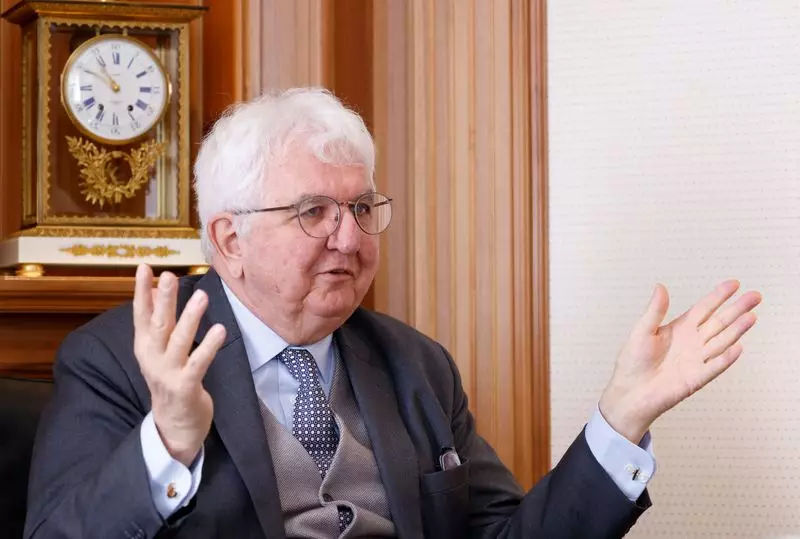The European Central Bank (ECB) is considering the possibility of cutting interest rates in June as inflation levels are expected to drop faster than previously anticipated. Robert Holzmann, an Austrian policymaker and member of the ECB’s Governing Council, emphasized the importance of not moving too far ahead of the U.S. Federal Reserve in order to maintain the effectiveness of easing measures. While he remains cautious, Holzmann acknowledged the potential for a rate cut in June based on incoming data and market conditions. He emphasized the need to rely on data-driven decision-making rather than setting a fixed course of action.
Holzmann expressed concerns about the potential impact of a diverging monetary policy between the ECB and the Federal Reserve. If the Fed decides not to cut rates in June, it could undermine the intended economic impact of an ECB rate cut. This highlights the importance of coordination and alignment between major central banks in order to maximize the effectiveness of monetary policy measures. Holzmann suggested that the ECB should carefully consider its actions in light of the Fed’s upcoming decisions to avoid negative market reactions.
Even if the ECB decides to reduce the deposit rate, which currently stands at a record high of 4%, interest rates would still pose restrictions on economic growth. Holzmann indicated that the ECB would need to significantly lower rates to reach a neutral level conducive to sustainable growth. He proposed a target deposit rate of 3% based on inflation rates and productivity levels, although this target could vary depending on the euro zone’s productivity performance relative to the U.S. market. Market expectations foresee a gradual decrease in the deposit rate over the long term, but details regarding the endpoint of this easing cycle remain uncertain.
Holzmann’s shift towards considering policy easing reflects an evolving inflation outlook and economic challenges within the euro zone. With inflation anticipated to decrease more rapidly than previously projected, the ECB may need to take preemptive measures to support economic stability. Factors such as commodity prices, goods inflation, and global trade conditions are influencing the inflation trajectory in the euro zone. Despite concerns about wage growth and its potential impact on inflation, Holzmann indicated that businesses may adjust their pricing strategies to accommodate changes in labor costs.
The euro area faces additional challenges in the form of higher energy prices and trade restrictions that limit its growth potential compared to other regions. Holzmann highlighted the need for the euro zone to address these competitive disadvantages in order to enhance its economic prospects. By acknowledging the external factors influencing the region’s economic performance, policymakers can develop targeted strategies to mitigate risks and foster sustainable growth.
Overall, the ECB’s deliberations on interest rate cuts reflect a complex interplay of domestic and global economic factors. As the euro zone navigates challenges such as inflation dynamics, productivity differentials, and external pressures, policymakers must adopt a nuanced approach to monetary policy to support long-term economic stability and growth. By carefully evaluating the risks and benefits of potential rate cuts, the ECB aims to strike a balance between stimulating economic activity and maintaining financial stability in a challenging economic environment.

